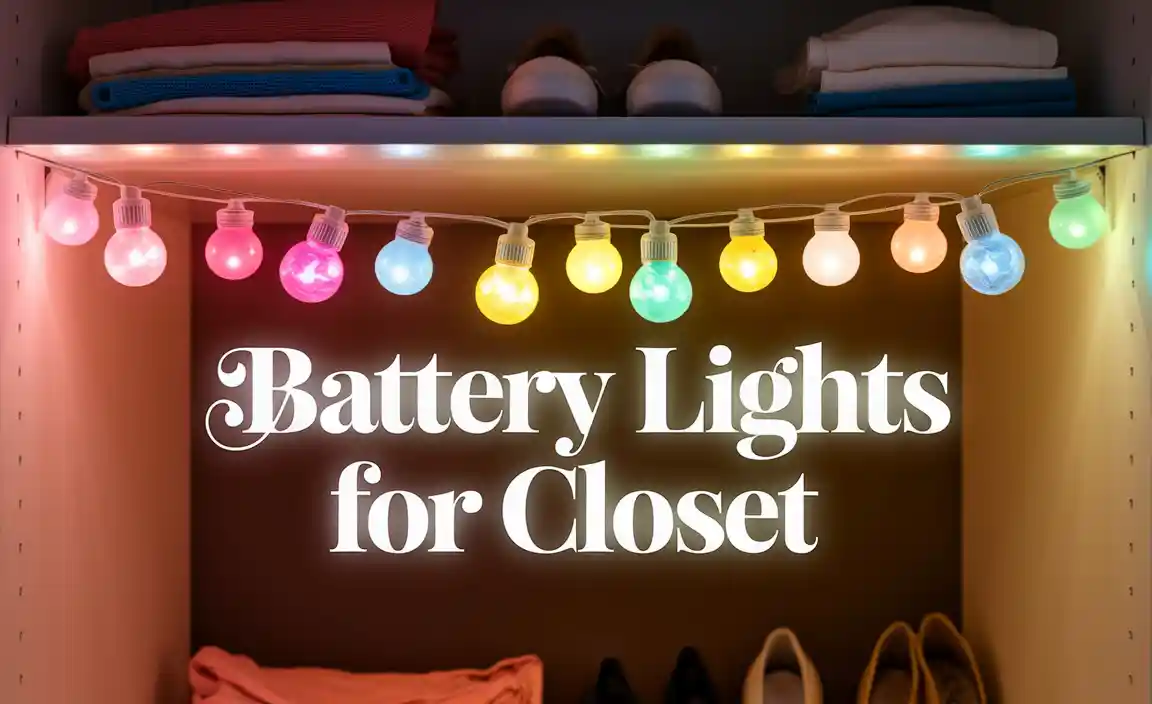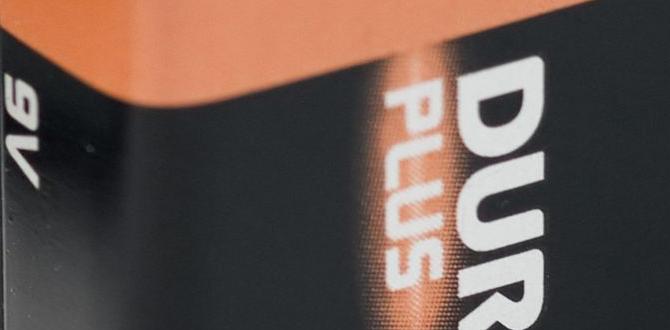Quick Summary: For your 2014 Ford Focus, the correct car battery size is typically Group Size 35. Always double-check your owner’s manual or consult a parts specialist to confirm dimensions, terminal post location, and reserve capacity for the best fit and performance. Ensuring the right size prevents installation issues and ensures reliable power.
What Size Battery for 2014 Ford Focus: Your Essential Guide
Is your 2014 Ford Focus battery acting up? A dead battery can leave you stranded, and finding the right replacement can feel like a puzzle. Don’t worry; you’re not alone! This guide will make it super simple to figure out exactly what size battery your Ford Focus needs. We’ll walk you through everything, from understanding battery basics to making sure you get the perfect fit. Get ready to power up your ride with confidence!
We’ll cover:
- Why the right battery size matters
- How to find the correct Group Size
- Important factors beyond just size
- Tips for installation and maintenance
Why Getting the Right Battery Size is Crucial
Think of your car battery like a specific puzzle piece. It has to fit just right! If you put in a battery that’s too big, it simply won’t fit into the battery tray. On the other hand, a battery that’s too small might be loose. This shaking can damage the battery and its connections over time, leading to power loss or even a breakdown. The correct size also ensures the battery’s terminals connect properly to your car’s cables.
Beyond just fitting, the right size battery is engineered to deliver the correct amount of power (cold-cranking amps, or CCA) needed to start your 2014 Ford Focus, especially in cold weather. It also has the necessary reserve capacity to power your car’s electronics when the engine isn’t running. Using the wrong size could mean your car struggles to start or your electronics don’t get enough juice.
Understanding Battery Group Sizes
Car batteries come in different standard sizes, and these are identified by “Group Sizes.” These numbers and letters tell you about the battery’s physical dimensions (length, width, height) and the placement of its positive and negative terminals. The most common labeling system is from the Battery Council International (BCI).
For a 2014 Ford Focus, the most commonly recommended Group Size is Group Size 35.
However, it’s always best to confirm. Here’s why and how:
How to Find Your Ford Focus Battery’s Group Size:
- Check Your Owner’s Manual: This is your car’s official instruction book. It will list the recommended battery group size for your specific model and year. Look in the maintenance or technical specifications section.
- Look at Your Current Battery: If your current battery is still in good condition and the correct one, the group size is often printed on a label on the battery itself. Look for “Group Size 35” or a similar designation.
- Consult an Auto Parts Store or Mechanic: Professionals at auto parts stores have databases that can quickly tell you the correct battery for your vehicle. You can also ask your trusted mechanic.
- Online Resources: Many reputable auto parts websites allow you to enter your vehicle’s make, model, and year to find compatible parts, including batteries.
Key Battery Specifications to Consider Beyond Group Size
While the group size is your primary guide for ensuring a proper fit, there are other important factors to consider for optimal performance and longevity:
1. Cold Cranking Amps (CCA)
Cold Cranking Amps measure how much power a battery can deliver to start your engine in freezing temperatures. The higher the CCA rating, the better the battery will perform in cold weather. For a 2014 Ford Focus, check your owner’s manual for the manufacturer’s minimum recommendation. Generally, a battery with a CCA rating around 500-600 amps is suitable for this vehicle, but always verify for your specific climate and driving conditions.
2. Reserve Capacity (RC)
Reserve Capacity is the number of minutes a fully charged battery can deliver 25 amps at 80°F (27°C) before its voltage drops below a usable level. A higher RC means your battery can power your car’s accessories (like lights, radio, or air conditioning) for a longer time if the alternator isn’t working, or if you’re stuck in traffic with the engine off. For a typical daily driver, a Reserve Capacity of around 90-120 minutes is usually sufficient.
3. Terminal Type and Position
Batteries have positive (+) and negative (-) terminals. For a proper connection, these terminals must be accessible and in the correct position so your existing battery cables will reach. Group Size 35 batteries typically have top-mounted, opposite-facing terminals, meaning the positive terminal is on one side and the negative on the other. Ensure the cable will reach comfortably without being stretched or strained.
4. Battery Technology
There are two main types of lead-acid batteries commonly used in vehicles:
- Flooded (Wet Cell) Batteries: These are the traditional type, where the lead plates are submerged in an electrolyte solution. They are generally less expensive.
- Absorbent Glass Mat (AGM) Batteries: These use fiberglass mats to absorb the electrolyte. AGM batteries are known for their durability, resistance to vibration, and ability to handle deeper discharges and higher electrical loads (common in cars with many electronic features or start-stop technology). While generally more expensive upfront, they often last longer and offer better performance. Your 2014 Ford Focus might have come originally with a flooded battery, but an AGM battery is often a compatible and sometimes superior upgrade, provided your car’s charging system can handle it (most modern systems can).
5. Warranty
Car batteries come with warranties, which can range from 1 to 5 years or more. A longer warranty often indicates the manufacturer’s confidence in the battery’s quality and durability. Look for a pro-rated warranty, which offers a full replacement for the first part of the warranty period and a partial refund afterward.
Comparing Battery Options: A Quick Look
Here’s a simplified comparison of common battery types you might encounter when looking for a replacement for your 2014 Ford Focus:
| Feature | Group Size 35 (Typical for 2014 Ford Focus) | Other Common Sizes (Less Likely for Focus) |
|---|---|---|
| Dimensions (Approximate) | Length: 9.1 inches, Width: 6.9 inches, Height: 8.9 inches | Vary greatly (e.g., Group 24F, Group 51R) |
| Terminal Position | Top, opposite post | Varies (e.g., top, side, reverse top) |
| Common CCA Range | 500-600+ amps | Varies by size and application |
| Typical Applications | Many mid-size sedans and coupes like the Ford Focus, Toyota Camry, Honda Accord | Trucks, larger SUVs, smaller cars, or specific import models |
Note: Always confirm exact dimensions and terminal locations for any battery you consider.
Step-by-Step Guide: Replacing Your 2014 Ford Focus Battery
Replacing a car battery is a manageable DIY project if you’re careful and follow safety precautions. If you’re not comfortable, it’s always best to have a professional do it.
Tools and Materials You’ll Need:
- New car battery (correct Group Size 35)
- Wrench set or socket set (usually 10mm and 12mm are common for battery terminals and hold-down clamps)
- Battery terminal cleaner brush or wire brush
- Safety glasses
- Gloves
- Optional: Anti-corrosive battery terminal spray or grease
- Optional: Small wire or brush to clean battery tray
- Optional: Memory saver (plugs into OBD-II port to keep car’s computer settings)
Safety First!
Car batteries contain acid and can produce flammable hydrogen gas. Always wear safety glasses and gloves. Work in a well-ventilated area. Never smoke or allow sparks near the battery. Disconnect the negative terminal first and reconnect it last to prevent accidental short circuits.
The Process:
- Prepare Your Car: Turn off the engine and remove the key from the ignition. Open the hood and locate the battery. It’s usually on one side of the engine bay.
- Disconnect the Negative Terminal: Using your wrench, loosen the nut on the clamp holding the black (negative, “-“) cable. Gently twist and pull the cable off the battery terminal. Move it away from the battery so it can’t accidentally touch the terminal.
- Disconnect the Positive Terminal: Now, loosen and remove the nut on the clamp holding the red (positive, “+”) cable. Pull the cable off the terminal.
- Remove the Battery Hold-Down Clamp: Most batteries are secured by a clamp at the base or a metal strap over the top. Locate the bolts holding this clamp in place (you might need a socket wrench for this) and remove them. Take off the clamp and set it aside with the bolts.
- Lift Out the Old Battery: Batteries are heavy! Carefully lift the old battery straight up and out of the battery tray. Be sure to maintain a good grip. If it’s very difficult, check if there are any other unseen restraints.
- Clean the Battery Tray and Terminals: Inspect the battery tray for corrosion or debris. Clean it with a brush if needed. Use your battery terminal cleaner brush to thoroughly clean the inside of both the positive and negative cable clamps. This ensures a good electrical connection.
- Install the New Battery: Carefully place the new battery into the tray, ensuring it sits level and is oriented correctly (positive and negative terminals in the right positions).
- Secure the Hold-Down Clamp: Reinstall the battery hold-down clamp and tighten the bolts to secure the new battery. Don’t overtighten, but make sure the battery is snug and won’t move.
- Connect the Positive Terminal: Place the red (positive, “+”) cable clamp onto the positive terminal of the new battery. Tighten the nut firmly with your wrench.
- Connect the Negative Terminal: Place the black (negative, “-“) cable clamp onto the negative terminal. Tighten the nut firmly.
- Optional: Apply Anti-Corrosion Protection: Apply a thin layer of anti-corrosive spray or grease to the terminals and clamps to help prevent corrosion.
- Final Check: Double-check that both terminals are securely connected and tightened. Ensure the battery is firmly held in place.
- Start Your Car: Close the hood and start your Ford Focus. It should start up smoothly!
Proper disposal of your old battery is important. Most auto parts stores will take your old battery back for recycling when you purchase a new one. Check with your local regulations for hazardous waste disposal in your area.
Maintaining Your Car Battery for Longevity
Once you have the right battery, taking good care of it can make it last longer:
- Keep it Clean: Periodically check for corrosion on the terminals. Clean them with a wire brush and a mixture of baking soda and water if you see any white, powdery buildup. Rinse with clean water and dry thoroughly.
- Check Connections: Ensure the battery cables are always tight. Loose connections can cause starting problems and drain the battery.
- Avoid Deep Discharges: Try not to leave lights, radio, or accessories on with the engine off for extended periods, as this can drain the battery too much. Modern batteries, especially AGMs, handle this better, but it’s still good practice.
- Protect from Extreme Temperatures: Extreme heat can shorten a battery’s life, while extreme cold can reduce its starting power. If possible, park in a garage during very hot or very cold weather.
- Regular Testing: Have your battery tested annually, especially if it’s more than 3 years old. Many auto parts stores offer free battery testing.
Frequently Asked Questions (FAQs)
Q1: What happens if I use a battery that’s too large for my 2014 Ford Focus?
A battery that’s too large physically will not fit into the designated battery tray and mounting bracket. You won’t be able to secure it properly, which can lead to damage and safety issues.
Q2: Can I use an AGM battery instead of a traditional flooded battery in my 2014 Ford Focus?
Yes, often you can. AGM batteries are generally compatible with most vehicles originally equipped with flooded batteries. They can offer improved performance and lifespan. However, if your car has a complex start-stop system or very high electrical demands, it’s worth confirming compatibility with a professional.
Q3: My 2014 Ford Focus has a lot of electronics. Do I need a special battery?
While a standard Group Size 35 battery will likely be sufficient, if you have many aftermarket electronics (powerful sound systems, extra lighting, etc.) or if your vehicle has advanced features like automatic start/stop, consider an AGM battery. AGM batteries generally have higher capacity and can handle these demands better, but always check recommended specifications.
Q4: How long should a car battery last?
On average, a car battery can last between 3 to 5 years. This can vary significantly based on climate, driving habits, battery quality, and maintenance. Following the maintenance tips in this guide can help extend its life.
Q5: Where can I properly dispose of my old 2014 Ford Focus battery?
It’s crucial to recycle car batteries properly because they contain hazardous materials like lead and acid. Most auto parts retailers offer battery recycling when you purchase a new one. You can also check with local recycling centers or hazardous waste disposal facilities in your area.
Q6: What does the warranty on a car battery mean?
A battery warranty protects you against manufacturing defects. A full replacement warranty means you get a new battery for free during that period. A pro-rated warranty means that after a certain time, you’ll get a credit towards a new battery, and you’ll pay the difference based on the remaining warranty period and the new battery’s price.
Conclusion
Choosing the right battery for your 2014 Ford Focus doesn’t have to be complicated. By focusing on the correct Group Size, typically Group 35, and considering factors like CCA, Reserve Capacity, and terminal placement, you can ensure a perfect fit and reliable power. Remember to consult your owner’s manual, and don’t hesitate to ask for help from auto parts professionals. With the right battery and a little care, you’ll keep your Focus running smoothly for years to come, ensuring peace of mind on every journey.






